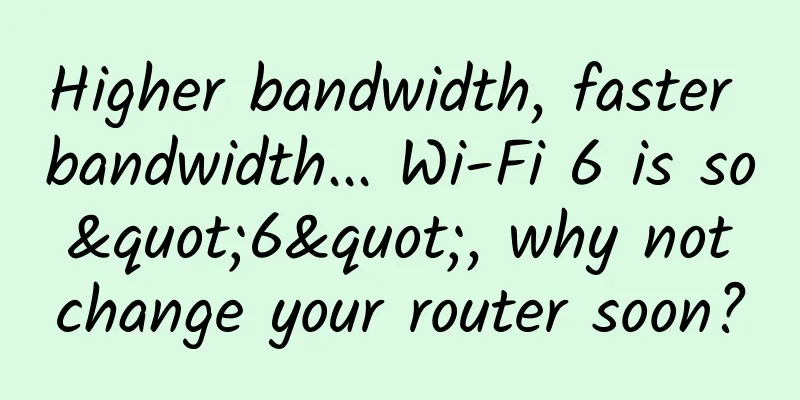Small router, do you really understand its structure?

|
There are four main types of routers in the network.
Of all the types of memory, RAM is the only one that loses its contents when the router is booted or has a power interruption; in the following introduction, we will briefly explain the main purpose of each type of memory in the router. ROM ROM stores the boot software of the router. This is the first software that the router runs and is responsible for getting the router into normal working state. Some routers store a complete set of IOS in ROM so that it can be used as an emergency when another IOS cannot be used. ROM is usually made on one or more chips and soldered on the host of the router. flash memory The main purpose of flash memory is to store IOS software to maintain the normal operation of the router. If the router is equipped with flash memory, it is the default location for booting the router's IOS software. As long as the flash memory capacity is sufficient, multiple IOS images can be stored to provide multiple boot options. Flash memory is either built on the SIMM of the motherboard or made into a PCMCIA card. RAM RAM has many uses, and it is impossible to list them all here. However, there are two things worth mentioning: the IOS system tables and buffers. IOS uses RAM for all of its general storage needs. The main function of NVRAM is to store the configuration data that IOS reads when the router starts. This configuration is called the "startup configuration." interface All routers have "Interfaces". Earlier, we have listed some of the interface types supported by routers. In routers using I0S, each interface has its own name and number. The full name of an interface consists of its type identifier and at least one number, starting from 0. For routers with fixed interfaces or modular interfaces that can only be changed when the host is turned off, there is only one number in the full name of the interface, and they are numbered according to their physical order in the router. For example, Ethernet0 is the name of the first Ethernet interface; and Serial2 is the name of the third serial port. If the router supports "online insertion and deletion" or has the ability to change the physical interface configuration dynamically (without shutting down the router) (hot swapping of cards), then the full name of an interface should contain at least two numbers separated by a forward slash (/). The first number represents the slot number where the interface processor card will be installed, and the second number represents the port number of the interface processor. For example, in a 7507 router, Ethernet5/0 represents the first Ethernet interface located in slot 5 - assuming that slot 5 has an Ethernet interface processor card installed. Some routers also support "universal interface processors" (VIPs). The name of an interface on a VIP consists of three numbers separated by a forward slash (/). Interface numbers are in the form of "slot/port adapter/port". For example, Ethernet4/0/1 is the second Ethernet interface on the first port adapter in slot 4. These numbering schemes may be a little confusing when you first encounter them. But don't worry, there is a way to get the router to tell us the full names of all its interfaces. Console Port Almost all routers have a console port installed on the back of the router. The console port provides an EIA/TIA-232 (formerly known as RS-232) asynchronous serial interface that allows us to communicate with the router. As for what kind of physical connection is established with the console port, it depends on the model of the router. Some routers use a DB25 female connection (DB25F), while others use an RJ45 connector. Typically, smaller routers use an RJ45 console connector, while larger routers use a DB25 console connector. Auxiliary port Most Cisco routers are equipped with an "Auxiliary Port". Similar to the console port, it provides an EIA/TIA-232 asynchronous serial connection that allows us to communicate with the router. The auxiliary port is usually used to connect a modem to achieve remote management of the router. The remote communication link is usually not used to transmit normal routing data packets. Its main function is to access a router after the network path or loop fails. Configuration Files There are two types of IOS configurations:
Both are displayed in ASCII text format. So, we can read and operate them very conveniently. A router is a processor that performs the work required to process packets, such as maintaining the various tables required for routing and bridging, making routing decisions, etc. The speed at which a router processes packets depends largely on the type of processor. Memory You choose one of these two types. The running configuration, sometimes called the "active configuration," resides in RAM and contains the IOS configuration commands that are currently "active" in the router. When you configure the IOS, you are changing the running configuration of the router. Launch Configuration The startup configuration resides in NVRAM and contains the configuration commands you want to execute when the router boots up. After the boot is complete, the commands in the startup configuration become the "running configuration." Sometimes the startup configuration is also called the "backup configuration." This is because after modifying and approving the running configuration, you should usually copy the running configuration to NVRAM to "back up" the changes so that the router can be called the next time it starts. process The so-called I0S "process" refers to a special software task running on the router to achieve a certain function. For example, the routing of IP packets is completed by one process, while the routing of AppleTalk packets is completed by another process. Other examples of IOS processes are routing protocols and memory allocation routines. When we configure the IOS by placing commands into configuration files, we are actually controlling the behavior of the processes that make up the IOS. All of these processes run simultaneously on the router. The number and type of processes that can run on a router depends on the speed of the router's CPU and the amount of RAM installed. This is similar to how the number of programs running on a PC depends on the type of CPU and the amount of RAM installed. |
<<: Will 5G eliminate Wi-Fi/4G? No, multi-access network integration is the way to go!
>>: What is the difference between a wireless router and an optical modem? This article tells you
Recommend
2021 China Internet Haha List 3: Top Ten Keywords
With change comes new opportunities. The Internet...
Hostodo: $34.99/year KVM-2.5GB/25G NVMe/8TB/3 data centers
Hostodo released two special packages in Septembe...
RackNerd: $14.89/year KVM-1GB/20GB/3TB/Los Angeles MC Data Center
RackNerd is a foreign VPS hosting company founded...
The persistence behind comprehensive, stable and high-quality CDN: integration + self-built
On November 16, 2016, GFIC2016, hosted by DVBCN&a...
Is there still a market for pure 4G mobile phones?
According to a report by China Business News, Hua...
ARP spoofing principle, never connect to free WIFI at will! ! !
1. Analysis of ARP attack principles 1. What is A...
As of December 2020, there are 229 million 5G users worldwide
On December 22, according to foreign media report...
Tudcloud: Hong Kong VPS with 20% off for monthly payment and 30% off for half-year payment, with options of large bandwidth or unlimited traffic
Tudcloud has released a year-end discount, offeri...
Why Manufacturing is an Excellent Use Case for Edge Computing
As IoT devices become more common, edge computing...
How can the CDN industry break through the era of negative gross profit?
Since the Ministry of Industry and Information Te...
VMISS 30% off, starting from $2.6/month, Hong Kong/Japan/Korea/Los Angeles CN2 GIA/AS9929/CMIN2 and other computer rooms
VMISS (Virtual Machines Innovative Solutions) was...
JuHost Newly Launched Japan Tokyo 1Gbps Port High Bandwidth VPS 30% Off Starting from $3.49/month
JuHost has newly launched a data center in Tokyo,...
Enterprises are joining in one after another, rapidly expanding the 5G private network "circle of friends"
As we enter 2021, the industry is increasingly ca...
WiFi optimization has tricks to surf the Internet without fighting
During the Dragon Boat Festival holiday, it is ne...
GSA report: Global application status of LTE and 5G in Sub 1GHz spectrum
GSA released a report that believes that the freq...









